Our History
"I want to produce an artificial nipple which is very similar to mothers' nipple"
- Yuichi Nakata, founder of Pigeon

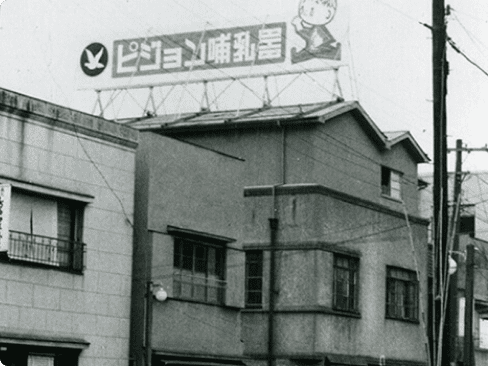
With no available research data and know how, Mr. Nakata found his own unique methods to study the sucking mechanism of babies.
Mr. Nakata’s research data has contributed to the development of artificial teats. What Yuichi Nakata saw was the unique movements of the tongues of babies when they sucked milk. Scientifically named “Peristaltic Movements” much later, they formed the basis of all the bottles and nipples made in the PIGEON research center.
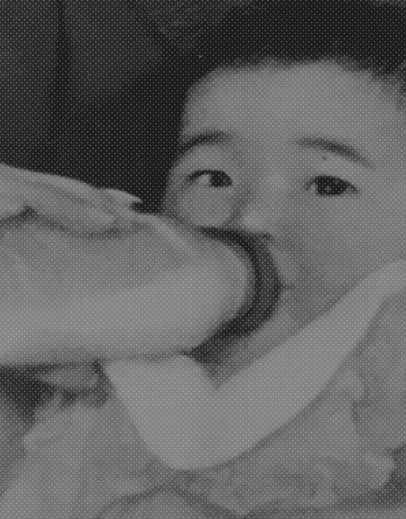
Spreading our wings to over 40 countries
With the range of products encompassing every need in maternity and baby care, PIGEON is a one-stop shop for mothers and mother-to-be.
Spreading its wings to over 40 countries, PIGEON is the top player in the international markets today. Headquarters in japan, PIGEON has subsidiaries in Singapore, Malaysia, India, Thailand, Korea, China, and USA. Singapore is the regional headquarter for ASEAN countries.
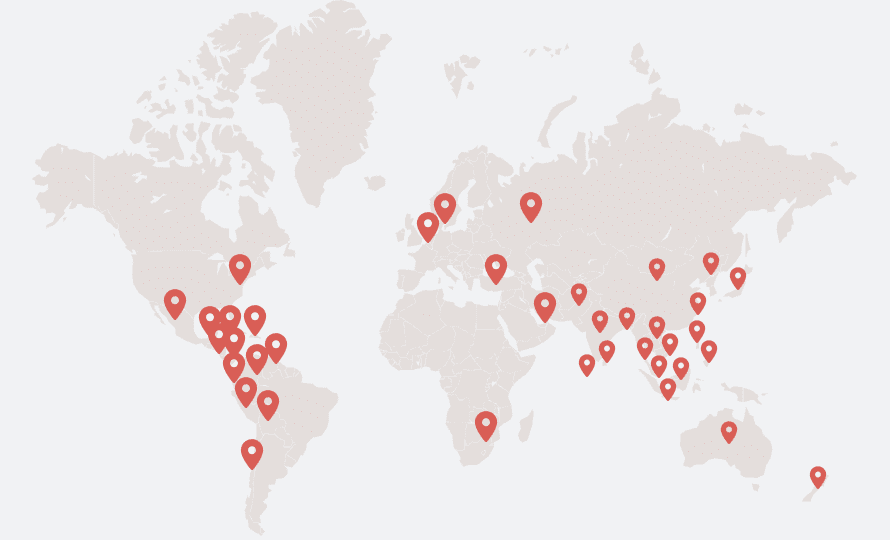
For over 6 decades, PIGEON has dedicated research capabilities towards the sucking behavior of babies. Having established a solid foundation of research, PIGEON is recommended today by most top medical and academic professionals.
Our Timeline
1950s
1957
Pigeon Honyuki Honpo Corporation
Pigeon Honyuki Honpo (Nursing Bottle Manufacturing) Corporation established in Chigasaki City, Kanagawa Prefecture

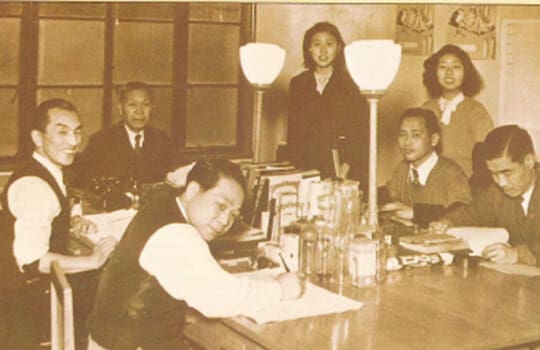
1958
Head office relocated to Kanda-Higashimatsushita-cho, Tokyo

1960s
1963
Ichikawa Plant opened in Chiba Prefecture; Osaka Office established


1964
Fukuoka Office established
1965
Nagoya and Sapporo offices established
1966
Name changed to Pigeon Corporation
1967
Hiroshima Office established
1968
Sendai Office established
1970s
1973
Branch offices reorganized as stores; head office new building in Kanda-Tomiyama-cho, Tokyo, constructed

1978
Pigeon Singapore Pte. Ltd. established in Singapore

1980s
1983
Yoichi Nakata appointed President
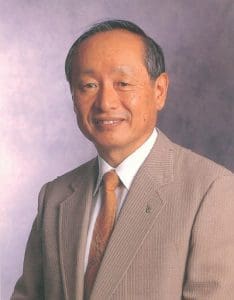
Yoichi Nakata
1985
Adopted Corporate Identity
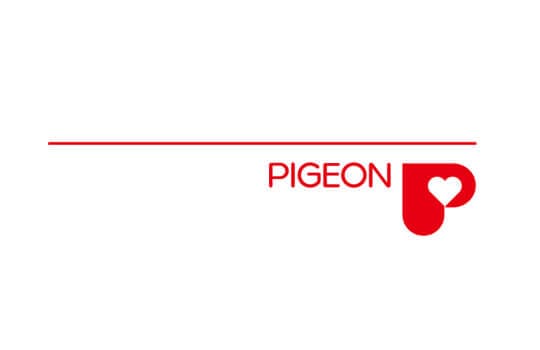
1986
Omiya Sales Office renamed Omiya Store
1987
Newborn Baby Commemorative Tree-Planting
The “Newborn Baby Commemorative Tree-Planting” Campaign launched as part of our corporate identity


1988
Shares registered
1989
Tsukuba Office opened
Tsukuba Office opened in Ibaraki Prefecture (relocated from Ichikawa); Pigeon Will Corporation established
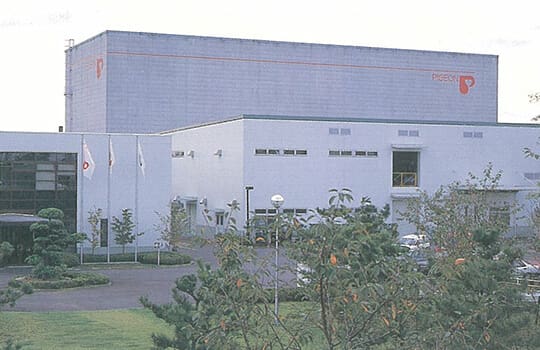
1990s
1990
Thai Pigeon Co., Ltd. established as a joint venture in Thailand

1991
Joso Research Center
Joso Research Center (now Central Research Center) established in Ibaraki Prefecture


1993
Pigeon Land
“Pigeon Land” child-minding facility for infants launched at Joso Research Center (now Central Research Center)


1994
Pt. Modern Pigeon Indonesia established as a joint venture in Indonesia

1995
Listed on the Second Section of the Tokyo Stock Exchange
1996
Pigeon Industries (Thailand) Co., Ltd. established as a joint venture in Thailand
Hitachiota Logistics Center began operations
1997
Listed on the First Section of the Tokyo Stock Exchange
1998
Kanzaki Logistics Center (Hyogo Prefecture) began operations
1999
Pigeon Kids World Corporation established
2000s
2000
Seiichi Matsumura appointed President and Chief Operating Officer; Yoichi Nakata appointed Chairman and Chief Executive Officer
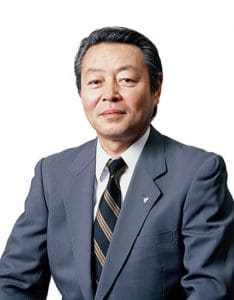
Seiichi Matsumura
Pigeon Manaka Corporation established

2001
The “Newborn Baby Commemorative Tree-Planting” Campaign conducted for the 15th time
Tsukuba Office acquired ISO14001 certification
2002
PHP Hyogo Corporation joins the Pigeon Group


Pigeon (Shanghai) Co., Ltd. established in China
Operation of licensed daycare centers, Pigeon Land Joso and Pigeon Land Yukitani, started
2003
Fukuyo Ibaraki Corporation changed its name to PHP Ibaraki Corporation

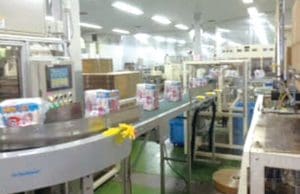
Pigeon Kids World Corporation changed its name to Pigeon Hearts Corporation

PHP Hyogo Corporation changed its name by replacing the katakana representation of “PHP” to its romanized form

2004
Tahira Corporation joins the Pigeon Group
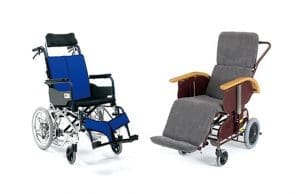

Operation of Sanno national child-minding facility (Ota-ku, Tokyo) launched
Lansinoh Laboratories, Inc. in the USA joins the Pigeon Group
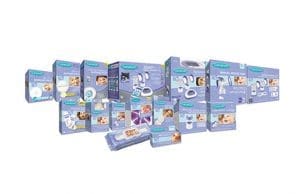
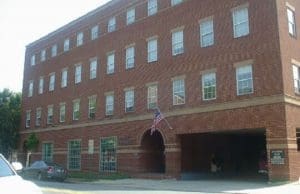
Operation of 113 child-minding facilities in hospitals of the National Hospital Organization (independent administrative agency) launched
2005
Privacy Mark certification acquired
2006
Pigeon Manufacturing (Shanghai) Co., Ltd. established in China

Tahira Corporation changed its name to Pigeon Tahira Corporation
The “Newborn Baby Commemorative Tree-Planting” Campaign conducted for the 20th time
Head office relocated to Nihonbashi-Hisamatsu-cho, Tokyo, as a result of the integration of all offices

2007
Akio Okoshi appointed President and Chief Operating Officer; Seiichi Matsumura appointed Chairman and Chief Executive Officer;

Akio Okoshi
Yoichi Nakata appointed Executive Advisor and Member of the Board
Recoup brand of anti-aging products launched

2008
Representative office established in India
2009
Lansinoh Laboratories, Inc. acquired sales rights for Soothies brand

Pigeon Industries (Changzhou) Co. Ltd established in Changzhou, Jiangsu Province, China.
Pigeon India Pvt. Ltd. established in India

Exclusive sales rights of “Mamas & Papas” (British company) products in Japan acquired
2010s
2010
Sales of UK brand “Mamas & Papas” products launched
Sales of Double Heart brand launched in South Korea
Lansinoh Laboratories, Inc. took over “mOmma” business
2011
Pigeon Malaysia Trading Sdn. Bhd. established in Malaysia after a local sales company became our wholly-owned subsidiary

Lansinoh Laboratories, Inc. acquired all of Health Quest Ltd. shares
2012
DoubleHeart Co., Ltd. established in South Korea
2013
Shigeru Yamashita appointed President and Chief Operating Officer; Akio Okoshi appointed Chairman and Chief Executive Officer

Shigeru Yamashita
2014
Pigeon Corporation absorbed and merged with Pigeon Will Corporation
Lansinoh Laboratórios Do Brazil Ltda. established in Brazil
2015
LANSINOH LABORATORIES BENELUX established in Belgium
2016
LANSINOH LABORATORIES SHANGHAI established in China
2017
PT PIGEON INDONESIA in Indonesia became consolidated subsidiary
2019
Norimasa Kitazawa appointed President and Chief Executive Officer
Shigeru Yamashita appointed Chairman of the Board
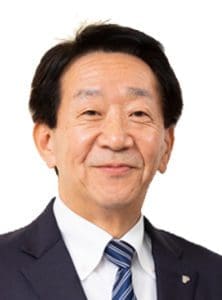
Norimasa Kitazawa
1940s
1949
First nursing bottle (A-type) with a wide neck
Doufu-Boueki, the predecessor of Pigeon Corporation, was established. First nursing bottle (A-type) with a wide neck was introduced in Japan. This pioneering design was more hygienic than previous bottles with a connected nipple.

1950s
1950
A-type nursing bottle — prototype of the current design — was introduced.
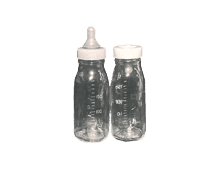
1952
B-type nursing bottle with a narrow neck was introduced.

1953
C-type improved nursing bottle with a connected nipple was introduced.
1954
S-type polyethylene nursing bottle was introduced in Japan
S-type polyethylene nursing bottle was introduced in Japan. The hexagonal shape not only helped babies grasp it easily but the new material also brought dramatic product improvements.
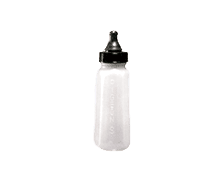
1956
The F-type nursing bottle, which was small and even suitable for fruit juice, was introduced.
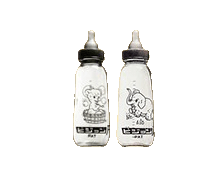
1957
Pigeon Corporation was established
L-type high-density polyethylene nursing bottle was introduced. This was designed to withstand boiling during sterilization, a weakness of traditional bottles.
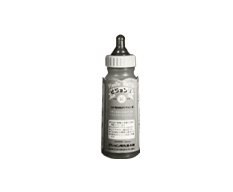
1959
The H-4-type and H7-type
The H-4-type and H7-type nursing bottles, both with narrow necks and directly attached nipples, were introduced.
The H-4-type nursing bottle was used at the Japan Red Cross Hospital, which was an important first step in the eventual widespread use of nursing bottles at hospitals and maternity hospitals.
1960s
1960
AN-type polyamide (nylon resin) nursing bottle was introduced.
A-D silicone nipple was introduced.
Isoprene rubber nipple, which resists wear compared with natural rubber, was introduced.
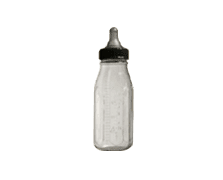
1962
Polycarbonate (PC) nursing bottle was introduced. Made to withstand sterilization, this tough, transparent, and lightweight design fulfilled all requirements for nursing bottles.
R-8-type nursing bottle was awarded the Tokyo Invention Prize, and was recommended by Japan Red Cross Hospital.
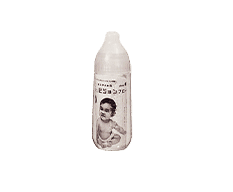
1964
A-type glass nursing bottle was introduced, becoming a best-selling product for 15 years.
1965
W-8-type nursing bottle was introduced
W-8-type nursing bottle was introduced. Thanks to improved bottle-mouth molding, the bottle’s flat mouth inner surface simplified cleaning for enhanced hygiene.
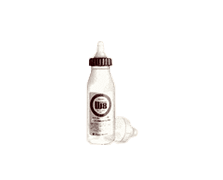
1966
Exporting to global markets started.

1967
Nursing bottle with a cap was approved by the Japanese Industrial Standards Committee and awarded the JIS Mark.
1968
Pigeon's market share for nursing bottles in Japan reached 80%.
1970s
1977
P-type nursing bottle was introduced
P-type nursing bottle was introduced. This was specially designed for proper feeding of babies with a cleft palate or inadequate sucking strength.
1979
K-type nursing bottle was introduced.
K-type nursing bottle was introduced. With its wide-end and rounded-corner square-bottom design, this uniquely stable shape was easy to hold and keep clean, and also simplified formula mixing.
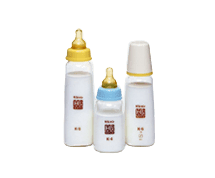
1980s
1988
Peristaltic motion in baby's natural sucking
Pigeon Basic Research group identified peristaltic motion in baby’s natural sucking action. This research has contributed many studies of infant growth to pediatric healthcare institutions, etc.
1990s
1991
Nursing bottle and nipple (Bonyu-soudan-shitsu) were introduced to promote education in breastfeeding.
1997
Concern about endocrine-disrupting chemicals in the environment led to media focus on polycarbonate (PC) nursing bottles.
1999
Glass nursing bottle sales shipments rose to 80% of market share.
2000s
2000
Five major manufacturers prepared and presented guidelines for safe use of polycarbonate (PC) nursing bottles.
Polyethersulphone (PES) nursing bottle was introduced.
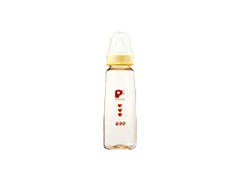
2002
Extensive research in breastfeeding
Based on extensive research in breastfeeding, a nursing bottle (Bonyu-jikkan) with a soft, elastic, flexible nipple was introduced. This helped babies to open their mouths wide and supported natural sucking action.
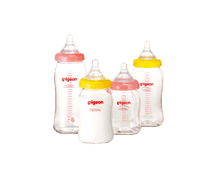
2003
Polyethersulphone (PES) nursing bottle (Bonyu-jikkan) was introduced. This lightweight bottle design allowed convenient portability.

2007
Polyphenylsulphone (PPSU) nursing bottle (Bonyu-jikkan) and nipples in four sizes were introduced.

2010s
2010
A new version of our nursing bottle (Bonyu-jikkan), which was designed to enable seamless switch between breast and bottle.
To meet our aim of faithfully replicating the important movements that occur during attachment, sucking, and swallowing, the bottle was redesigned with new materials.
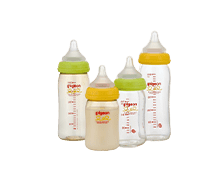
2012
The P-type nursing bottle was redesigned with a focus on ease of use.
To accommodate the mouths of babies with a cleft lip and cleft palate, the nipple had a redesigned shape and was made with new material. In addition, the available sizes were increased to 2.
The bottle’s new material was soft, allowing it to be squeezed to support babies with weak sucking.

2013
New designs of our specially decorated nursing bottles (Bonyu-jikkan) were introduced.
Based on trends found from conducting customer surveys and analysis, three different designs for the decorative versions of our nursing bottle (Bonyu-jikkan) were added. Since then, the bottle’s designs have changed in accordance with current trends.

2017
A new nursing bottle (Bonyu-jikkan my Precious) was introduced.
The bottle was designed with a round shape that made it easy to comfortable hold, and a previously compact 80 ml size, which was designed to suit the amount newborns drink, was added.
It received the 2017 Good Design Award.
We also added a nursing bottle nipple in size LL for parents who want to continue giving breastmilk to their babies for a long time, even after they have started eating baby food.

2018
A coated nursing bottle (Bonyu-jikkan Coating) was introduced.
The glass nursing bottle was developed with a silicon coating that gave it a new texture.
The thin silicone coating increased the safety of the glass bottle by reducing the possibility that glass shards would fly if the bottle broke.

Celebrates babies the way they are
Tips & Guides
Parenthood is constant learning and searching for the best way that works for you and your little one! It's never a linear journey so we've put together some tips to help you!
Blogs & Articles
Parents who've gone down the same path can point out the bumps or help to buckle your seat belt and embrace what's to come! Read on more for some real-life parenting stories!
Events & Seminars
Check out our latest breastfeeding webinars and seminars and sign-up for the next one!